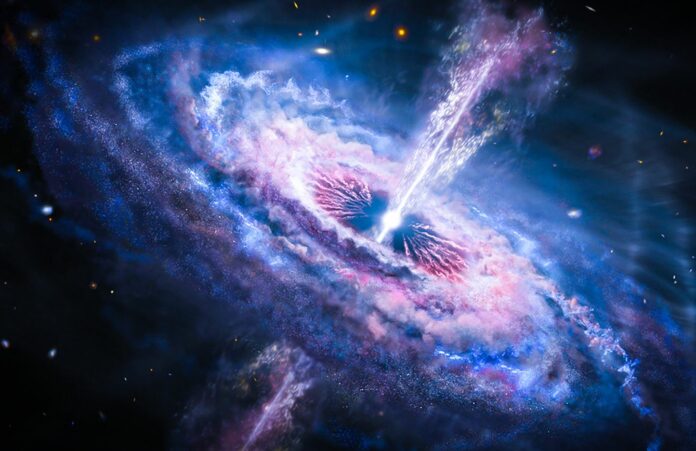Albert Einstein’s general theory of relativity has been proven to be true again.
Albert Einstein’s general theory of relativity means that we should observe the distant – and hence ancient – universe running much slower than the present day.
In a groundbreaking discovery, scientists successfully observed the early universe moving in a state of extreme slow motion, unraveling one of the enigmatic aspects of Einstein’s expanding universe.
Einstein’s general theory of relativity implies that the distant and thus ancient universe should appear to run much slower than the present-day universe. However, the ability to peer back in time to such an extent has been an elusive endeavor. Fortunately, scientists have now solved this puzzle by employing quasars as “clocks.”
Lead author of the study, Professor Geraint Lewis from the School of Physics and Sydney Institute for Astronomy at the University of Sydney, explained, “Looking back to a time when the universe was just over a billion years old, we see time appearing to flow five times slower.
“If you were there, in this infant universe, one second would seem like one second – but from our position, more than 12 billion years into the future, that early time appears to drag.”
The results of the study were published today in Nature Astronomy.
Professor Lewis, along with his collaborator Dr. Brendon Brewer from the University of Auckland, analyzed nearly 200 quasars—hyperactive supermassive black holes situated at the centers of early galaxies—to study this phenomenon of time dilation.
“Thanks to Einstein, we know that time and space are intertwined and, since the dawn of time in the singularity of the Big Bang, the universe has been expanding,” commented Professor Lewis.
“This expansion of space means that our observations of the early universe should appear to be much slower than time flows today.
“In this paper, we have established that back to about a billion years after the Big Bang.”
Prior to this breakthrough, astronomers had confirmed the existence of this slow-motion universe back to approximately half the age of the universe, utilizing supernovae—massive exploding stars—as “standard clocks.” However, due to their immense distances, observing supernovae in the early universe proved challenging, despite their extraordinary brightness.
By examining quasars, scientists have now pushed this temporal horizon back to just a tenth of the age of the universe, conclusively demonstrating that the universe appears to accelerate as it ages.
Professor Lewis elaborated, “Where supernovae act like a single flash of light, making them easier to study, quasars are more complex, like an ongoing firework display.
“What we have done is unravel this firework display, showing that quasars, too, can be used as standard markers of time for the early universe.”
The study involved Professor Lewis collaborating with astro-statistician Dr. Brewer to meticulously analyze data from 190 quasars collected over two decades. By combining observations captured in different wavelengths, including green light, red light, and infrared, they standardized the “ticking” of each quasar. Employing Bayesian analysis, they revealed the imprint of the universe’s expansion on the temporal behavior of each quasar.
“With these exquisite data, we were able to chart the tick of the quasar clocks, revealing the influence of expanding space,” added Professor Lewis.
These findings provide further confirmation of Einstein’s depiction of an expanding universe, countering earlier studies that failed to identify the time dilation of distant quasars.
“These earlier studies led people to question whether quasars are truly cosmological objects, or even if the idea of expanding space is correct,” Professor Lewis emphasized.
“With these new data and analysis, however, we’ve been able to find the elusive tick of the quasars and they behave just as Einstein’s relativity predicts.”
Image Credit: THE UNIVERSITY OF SYDNEY
